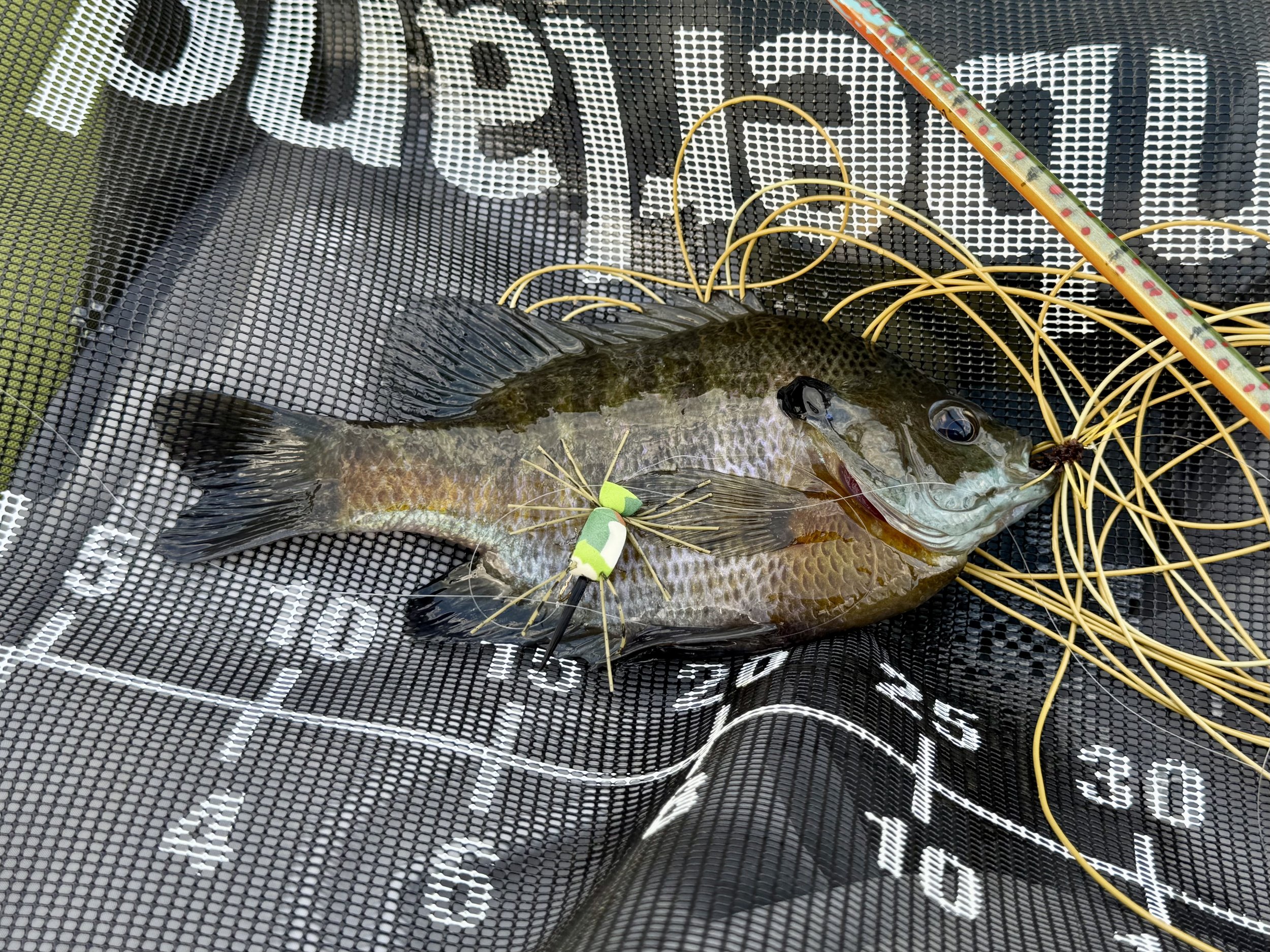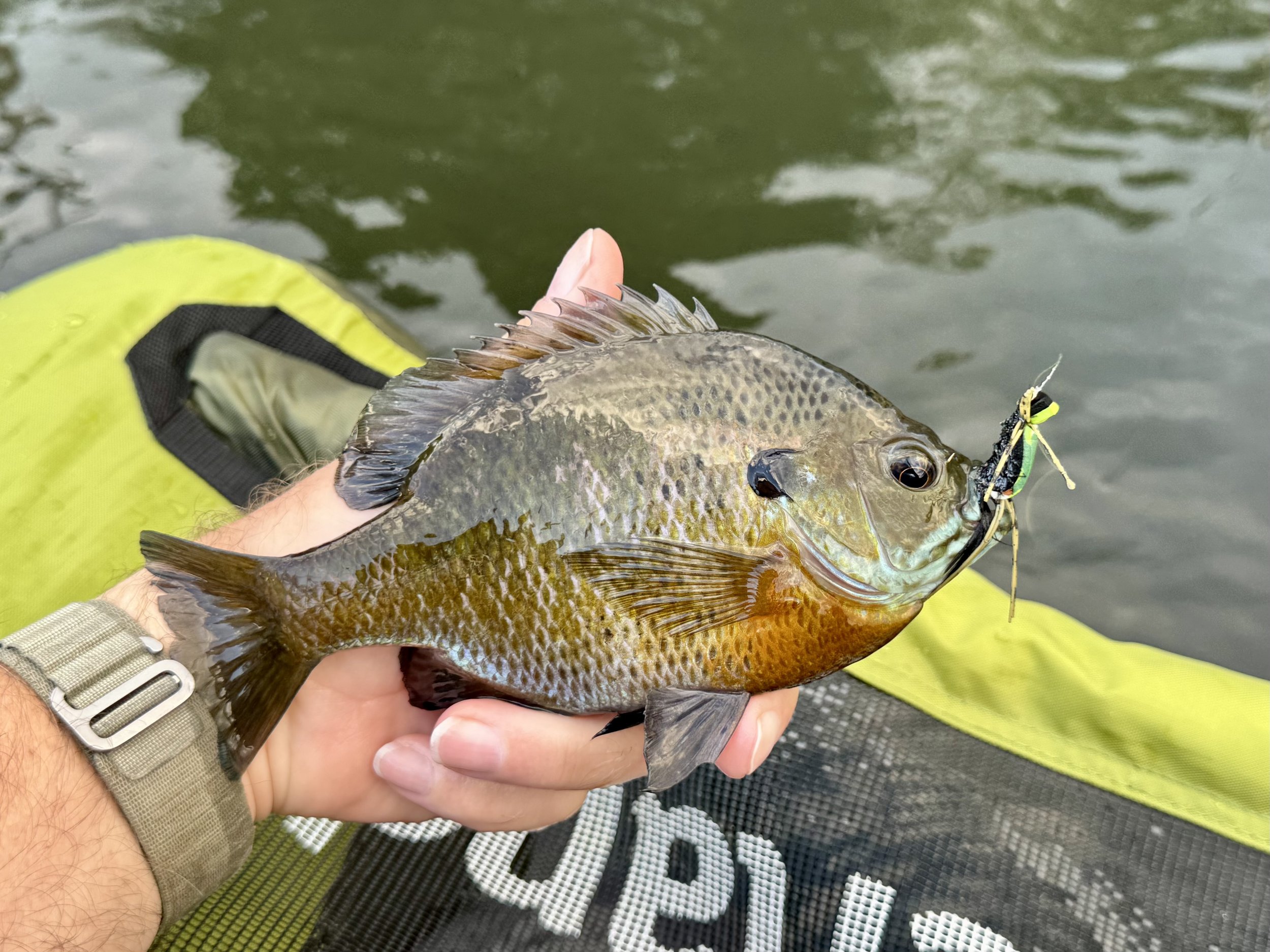In the past, I tied my foam spiders with pre-formed foam spiders or bug bodies. The pre-formed bodies looked and fished great. The problem was always the legs. The best-looking foam spiders had their legs threaded through the body and glued in place. If you did not get it right, the glue would react with the rubber leg material and produce some weird results. The fish did not care, but the misshapen legs annoyed me as a fly tier. The second problem is that the legs would eventually pull out as the fly got abused by fish.
A spider pattern tied with a pre-formed body.
These days, I stamp the bodies out of foam sheets with a rounded-end Chernobyl Ant foam cutter. The smallest foam cutter works well for size 8 & 10 flies and will even work on flies as small as size 12. A single sheet of 2mm foam on the smallest spiders will work. On larger flies, I prefer to glue a 1mm sheet to a 2mm sheet of foam for a little more buoyancy and a bi-color effect to show one color to the fish and one to the fly fisher. Using bi-color foam, your fly can be highly visible on the water but present a natural silhouette to the fish.
With legs tied in at the sides of the fly, instead of threaded through the body they are far more secure. While the fly tied with the foam cutter has a different profile the fish don’t seem to mind. In fact, you could tie the same fly using a foam strip and just do a little trimming with scissors to create a tapered end.
The Hidden Feature
I often utilize a dropper when using foam surface patterns. Because foam flies are very buoyant, they can easily support the weight of a nymph or wet fly without getting bogged down. Adding a second fly doubles your chances of catching a fish. By fishing a surface fly with a subsurface pattern tied on as a dropper, you can fish both on the surface and below it at the same time.
The traditional method for attaching a dropper is to tie a length of monofilament to the bend of the hook of the floating fly. This technique works well on barbed hooks as the barb keeps the dropper from slipping off. However, I tie many of my flies on barbless hooks and smash down the barbs on hooks that have them. I have had droppers slip off on a barbless hook while casting or fighting a fish.
Dropper loops added to hooks that are staged and ready to go.
To solve this problem, I add a small loop of hard mono tied in at the bend of the hook to most of my foam patterns if I wish to add a dropper to them while fishing. This loop makes adding a dropper a breeze, and I feel the fly fishes better when the dropper is tied to a dropper loop instead of the bend of the hook.
I tie in the hard mono, form a small loop at the back of the fly, and coat the thread wraps with super glue. I have never had one break or pull-out. I often do these in batches to save time at the bench.
A foam spider with a rubber leg nymph tied on as a dropper.
Fishing Dropper Rigs
Some fly fishers find casting dropper rigs difficult. To make casting these rigs easier, ensure you don’t use too long of a dropper. I try to keep the length of my droppers between twelve and eighteen inches for ease of casting. It also helps to slow down your casting strokes and open up your casting loops. Fast-action fly rods and tight loops can often cause problems casting dropper rigs. A fiberglass fly rod is my go-to in these situations. The full flex rod action that glass provides forces you to slow down your casting stroke, and this will minimize any mishaps associated with casting a two-fly rig.
Fish a large fly for bass and suspend a smaller panfish fly beneath it. You may catch a bass on one cast and a bluegill on the next!
Often, you will find that the subsurface fly out performs the surface pattern. The fish are attracted to the disturbance of the floating fly, and as they approach, the sinking fly presents itself as an easy meal. My favorite use of droppers is to attach them to larger flies intended for bass. In this case, I will add a panfish-sized fly on the dropper and use a larger bass-sized floating pattern. This way, you can fish for both species at the same time. It can be very productive since bass and panfish occupy the same water.
This bluegill did not get the memo that size 2 flies are for bass!
Takes on the dropper can be subtle at times. If you see that floating fly twitch ever so slightly, set the hook. If a fish takes the dropper with some gusto, they will often hook themselves when they encounter the resistance created by the floating fly.
Fish are often attracted to the disturbance created by the floating fly and end up grabbing the dropper.






